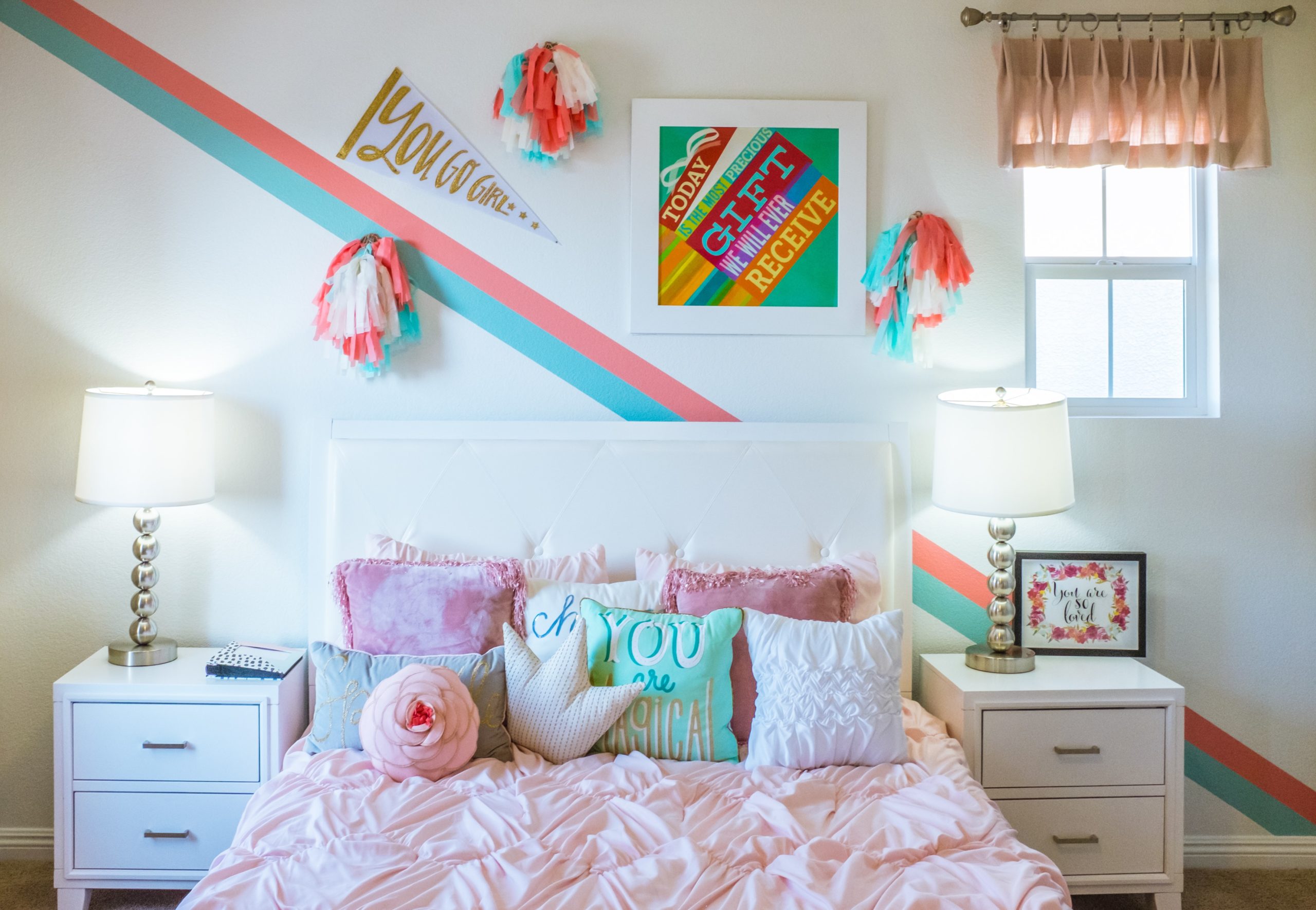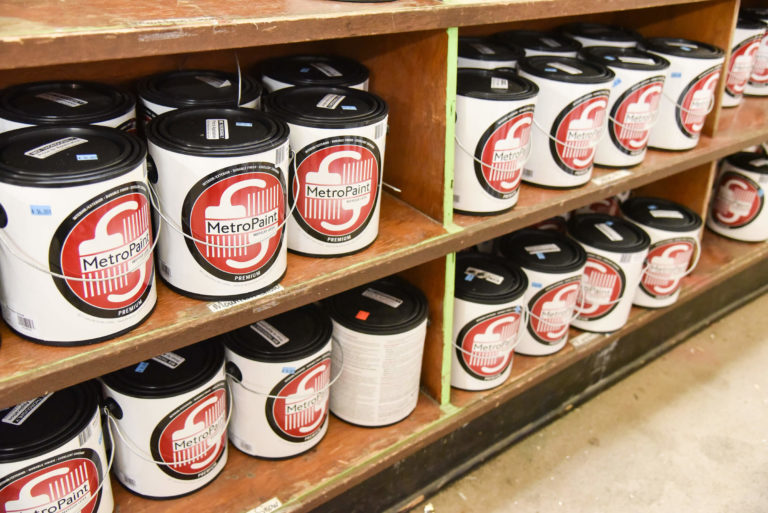
If you’ve visited the Fountain District recently, you’ve most likely seen the beautiful murals by local artists Debbie Dickinson and Gretchen Leggitt. Murals are a gorgeous—and easy—way to beautify any sort of surface. But you don’t have to hire an artist or spend a bunch of money to paint a mural.
One of the easiest ways to make your mural dreams come true is with leftover paint samples! Here at The RE Store, we sell latex, acrylic and other water-based paint and stain in sizes from 5 gallon to ¼ pint. We have an entire section in our paint department dedicated to samples—perfect for murals.
Where can you paint a mural?
A mural can be painted on any surface that accepts paint. Some ideas include:
- Mural on the side of a shed
- Mural on a fence in an alley
- Mural in a child’s bedroom
- Mural in a bathroom
- Mural in the living room
What supplies do you need to paint a mural?
Your mural supply list looks similar to a supply list for painting a room, with a few additions. You’ll need:
- Chalk
- Paint
- Paint brushes
- Painters tape
- Drop cloth
- Paint tray
- Soap and water

How do you plan a mural?
Murals can be something as simple as an artistically applied paint swipe along a wall, or a detailed scene with various colors and pieces.
The first step to planning a mural is determining what you want. It’s helpful to measure your space so that you have an idea of your work area. Once you’ve planned out your design, visit The RE Store and shop for colors. If the colors you are looking for aren’t in stock, come back soon. Our paint selection is always updated with new colors and options. Still not seeing what you’re looking for? Connect with our staff. It could be that your dream color just came in and hasn’t made it to the sales floor yet.
The best time for painting a mural using latex, acrylic or oil paints is when the humidity is low and you are able to work in a well-ventilated space. For the Pacific Northwest, this often means spring, summer and fall. If you’re working outside, make sure you have at least a few days of clear weather before rain. If you’re working indoors, ensure you’re able to use a fan or open windows to ventilate your space.
How do you paint a mural?
After determining your design and choosing your colors, prep your work space. Wash your painting surface, repair any holes or blemishes and lay down paint or drop cloths. A drop cloth can be sheet plastic, a canvas cloth or old bedsheets and are a great way to protect floors from stray paint drips. Painters tape can be used to mark off your design or protect trim and other surfaces.
After your surface has been prepared, transfer your design. Chalk, pencils and painters tape are great tools for helping mark off your lines and designating paintable areas from those that you want to keep paint-free.
Once your design has been transferred to your surface, prepare your paint! If you have lots of samples and testers, set them up in an easily accessible area. A low-rimmed cardboard box can keep all of your samples in one neat spot, making it so they don’t fall over or spill. Place your paints away from foot traffic; you don’t want to bump or trip over them as you go. Depending on the number of colors you use, you may want to use a variety of brushes with different thicknesses for fine lines and filler areas. A paint tray, paper bag or cardboard box can be used as a staging area for your brushes.
When your paint setup is ready, get to painting! When painting a mural, you’ll need to paint in stages or layers. Start by outlining your design, doing the large less-detailed or background pieces first. To ensure that your colors pop, paint at least 2-3 coats of paint per layer or section. Each layer should be completely dry before painting over or close to it. Not sure how long to let it dry? Check the paint container for specific instructions.
In between layers, be sure to step back to ensure your design is coming out as desired. The great thing about paint is that you can always paint over something you don’t like or add new features as you go.
As your mural progresses, give yourself plenty of dry time between layers to ensure your colors don’t bleed together or blend.
After you’ve finished painting, clean up your work area. A mural with many layers can take up to a month or week to dry, depending on the humidity level of your environment. If you’re able to, let your mural dry with plenty of warm, dry air or sunshine.
Whether you are an experienced painter or have never picked up a brush before, you can create a mural!
